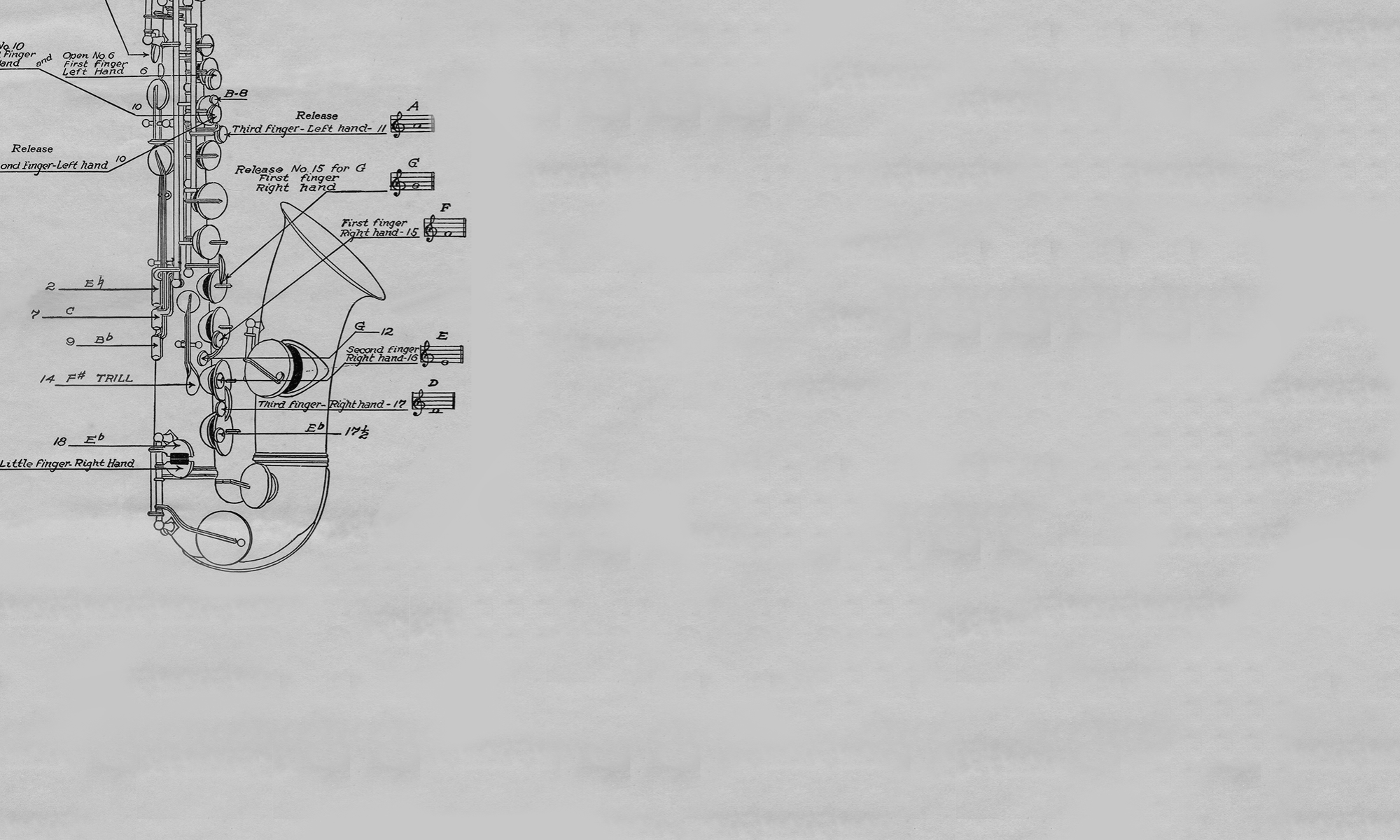Adolphe Sax’s most recognized instrument, the saxophone — invented and produced between 1844 and 1845 — has had a very complex musical and social life. Originally developed to blend the distinct tonal qualities of the woodwind and brass instruments commonly used by Europe’s military bands, the saxophone’s startlingly unique sound made it difficult for professional musicians and composers of that time to embrace the instrument. Despite Sax’s initial hopes that both symphonic orchestras and wind bands throughout Europe would eventually utilize the saxophone, the horn essentially became an exotic novelty and was treated more like a musical clown than a fine-art instrument. However, as technological improvements were adapted to the horn’s original design and performers refined their ability to play the family of instruments, audiences quickly embraced the saxophone’s many unique musical qualities.
The saxophone was introduced to American audiences on December 19, 1853, when the Belgian saxophonist Henri Wuille performed his first concerto for saxophone, Aurora Serenade, at New York City’s Metropolitan Hall. The French conductor Louis-Antoine Jullien added Wuille’s solo to the concert program with the hope that the novelty of the instrument would improve ticket sales for his orchestra’s performance. The next notable performance was by the Grand Republicaine Saxophone Octet, who performed in the US in 1872. A year later, Patrick Gilmore, considered one of the country’s greatest bandleaders at that time, hired Edward Lefebre, a Dutch saxophonist, to play in his American military band. This is the first instance of a saxophone section in an American band. Around this same time, Lefebre established New York City’s first major saxophone quartet, and his solo and quartet performances with the Gilmore band inspired several American musicians to begin purchasing saxophones from Paris’s Couesnon music company.
American music instrument companies began manufacturing saxophones in 1905. That same year, C.G. Conn reported in their company newsletter that “neighborhood saxophone quartettes are becoming the fashion.” These quartets modeled their performances on Lefebre’s saxophone ensemble, which performed transcriptions of light classical music.
Elise Hall (1853- 1924), an amateur Boston musician, who popularized performances of the saxophone in orchestral ensembles, led one of the more notable efforts in America. She commissioned Claude Debussy, Vincent D’Indy, Charles Martin Loeffler, and Florent Schmidt to compose new works for the saxophone, and she premiered many of them. Debussy’s Rhapsody (1901), perhaps his most famous work for saxophone, utilized many of the instrument’s colorful timbres to evoke the exotic sounds of North African cultures. Other composers quickly followed Debussy’s lead, using the saxophone’s unique sound to caricature and stereotype other cultures. While Georges Bizet, Camille Saint-Saens, and Richard Strauss included the saxophone in one of each of their symphonic works between 1872 and 1902, no professional orchestra at that time hired a full-time saxophonist for their ensemble.
